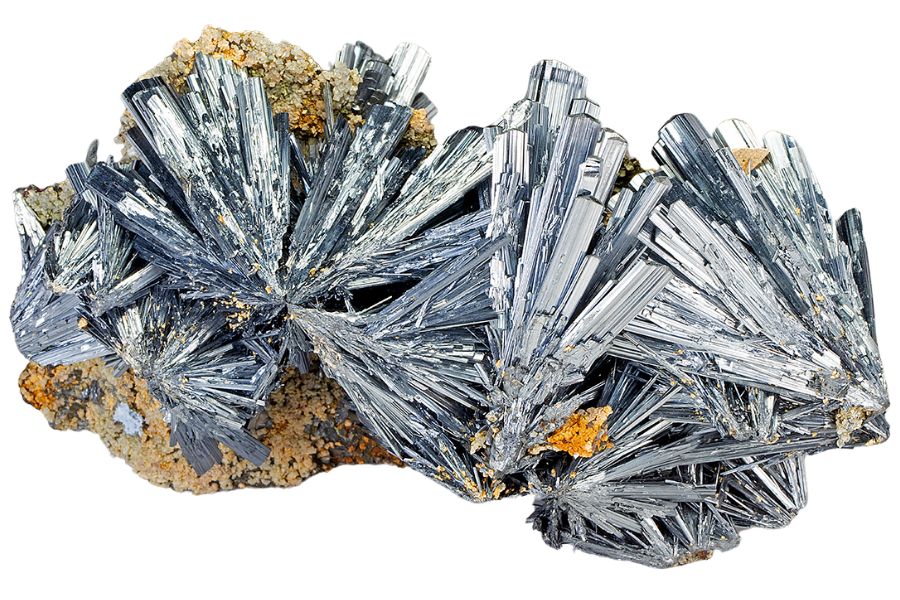Exploring the world of rocks and minerals, we often find ourselves fascinated by the variety of silver crystals. These natural beauties come in all shapes and sizes, each with its own story to tell.
We’ve come across stunning examples like galena, shungite, and molybdenite. These minerals showcase the diverse range of silver crystals we can encounter.
Understanding how these crystals develop helps us appreciate the intricate workings of the Earth. As we delve deeper into the world of silver crystals, we’ll uncover fascinating aspects of geology and mineralogy.
Our Favorite Silver Crystals
These crystals have caught our eye because of their bright, metallic luster that sparkles under the light. Their varied shapes and sizes make each one a special discovery on our geological adventures.
Galena
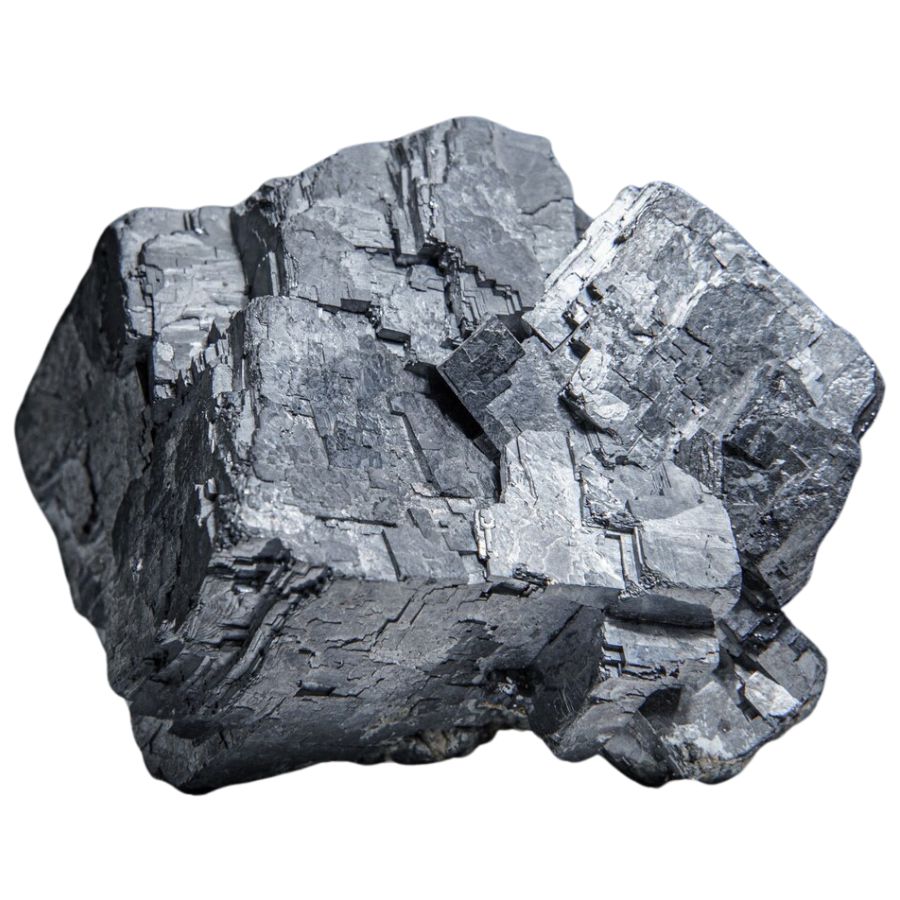
Galena is a fascinating mineral known for its shiny, metallic appearance and cubic structure. It’s primarily made of lead sulfide, giving it a heavy feel and a bright silver color.
Galena forms deep underground in both limestone and sandstone areas, where hot fluids flow through cracks, depositing the minerals. These crystals often grow in cube-like shapes, sometimes forming clusters that look like tiny cities made of silver.
People have used galena for thousands of years, mainly to extract lead. This lead is used in batteries, fishing weights, and even in radiation shields.
Another cool thing about galena is that it’s also an important source of silver. Some galena has enough silver to make it worth mining just for this precious metal.
Hematite
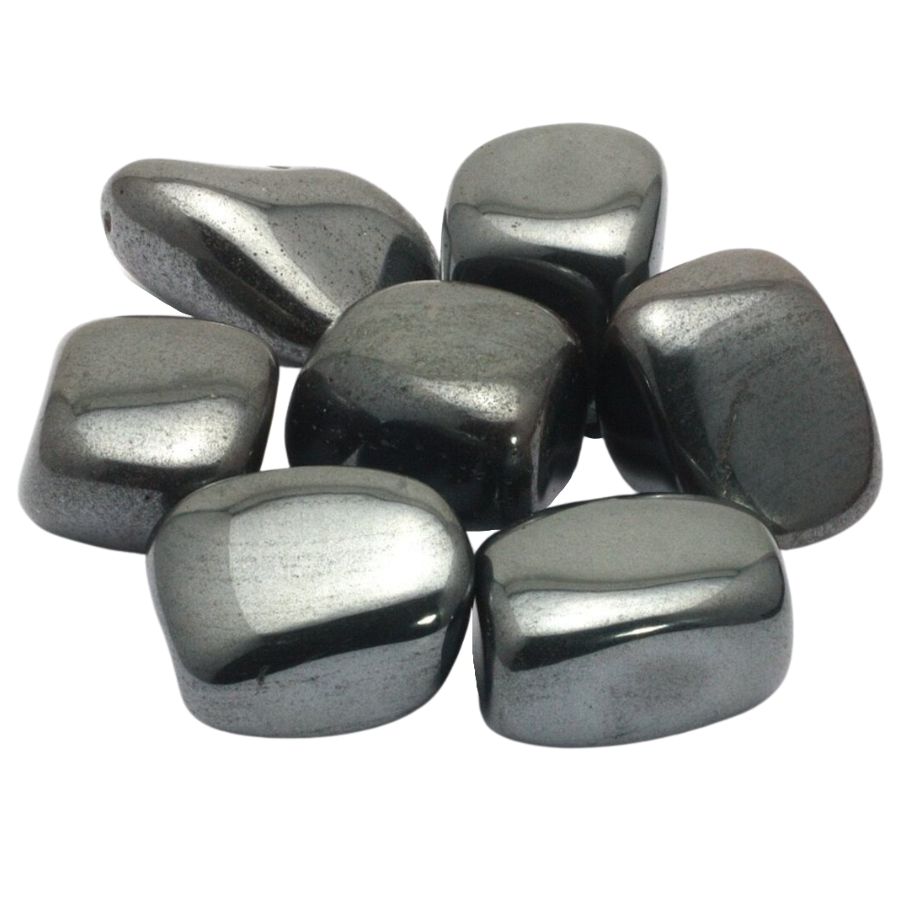
Hematite is a really cool mineral that stands out because of its reddish-black color and shiny, metallic look. It’s mostly made of iron oxide, which is iron and oxygen combined together.
Hematite forms in many different environments, but a lot of it comes from places where water once flowed, like old lakes and seas. This mineral can even form in hot springs, where the water’s heat and minerals work together to make hematite.
One big use of hematite is in making iron and steel, which are super important in buildings and cars. It’s also used in jewelry, giving a nice, shiny touch to necklaces and bracelets.
People find hematite valuable for different reasons. Its role in making steel is really important for construction. Meanwhile, its unique color and shine make it popular among collectors and jewelry makers.
Plus, scientists study hematite to learn about water on Mars, because it’s found there too!
Marcasite
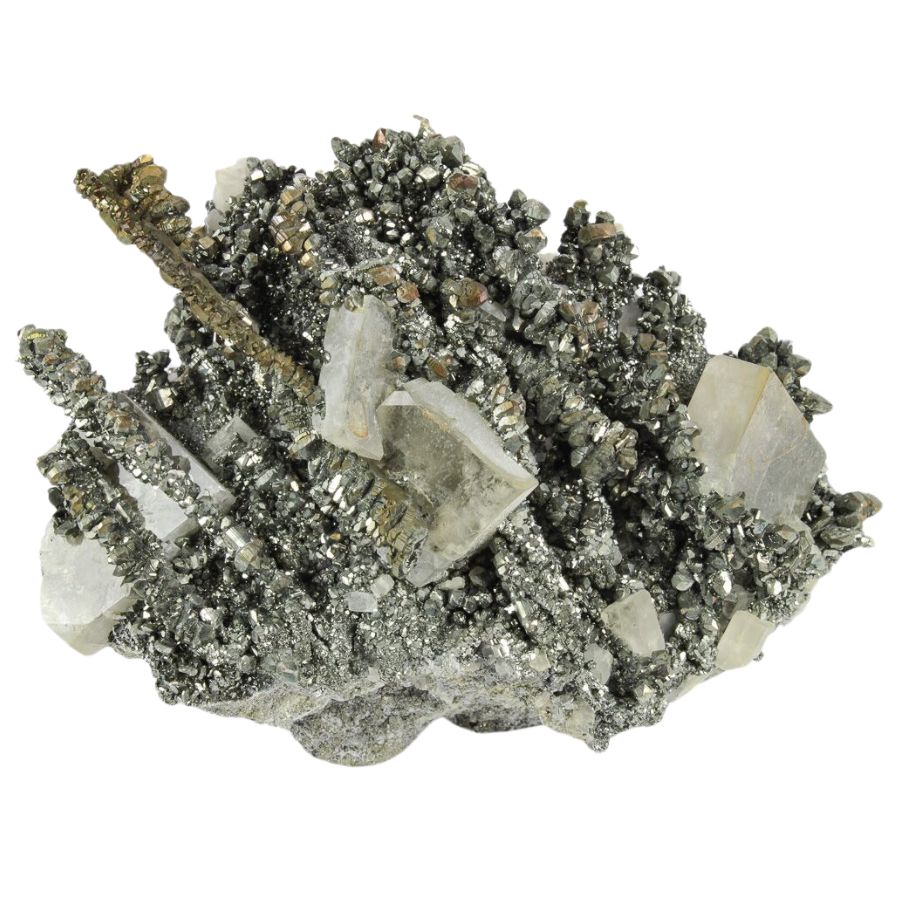
Marcasite is a neat mineral that’s often mistaken for pyrite, but it’s quite different. It’s made of iron sulfide, just like pyrite, but it has a different crystal structure.
Marcasite forms in a cool way, usually when iron and sulfur in water mix together and settle in sedimentary rocks. You can often find it in limestone and clay, and sometimes it forms in fossils, which is pretty amazing.
People have used marcasite in jewelry for a long time because of its metallic luster and unique appearance. It’s usually shaped into small, shiny stones and set in silver.
What makes marcasite special is its subtle, metallic sheen and the intricate patterns it forms. Collectors and jewelry lovers appreciate it for its distinct look.
Arsenopyrite
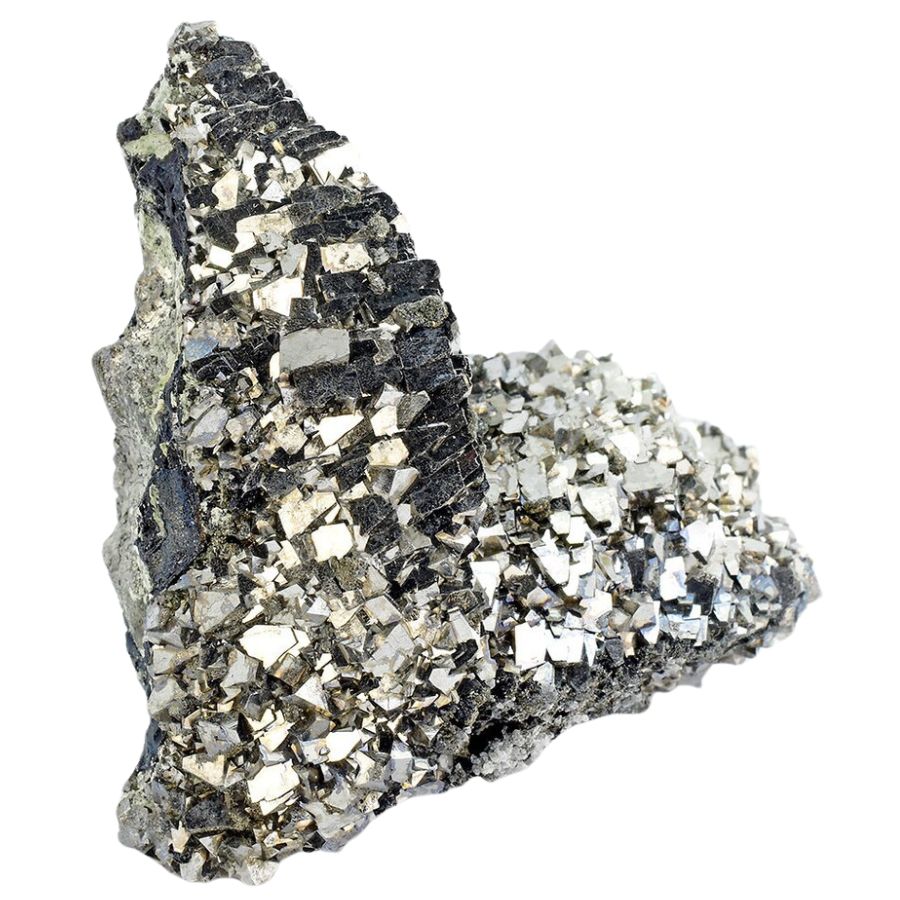
Arsenopyrite is an interesting mineral that’s known for its silver-white to steel-gray color and metallic luster. It’s a combination of iron, arsenic, and sulfur, which might sound unusual, but it’s quite common in nature.
This mineral usually forms in high temperature environments, like hydrothermal veins where hot, mineral-rich water flows through cracks in the Earth.
Arsenopyrite can also be found in rocks that have changed due to heat and pressure deep underground.
One important use of arsenopyrite is in mining, as it can contain gold. Extracting gold from arsenopyrite is a complex process, but it can be really worthwhile.
Besides gold, arsenopyrite is also a source of arsenic, which is used in some industrial processes.
Miners look for arsenopyrite as a sign there might be gold around. Collectors love it for its shiny, metallic look and the way it forms cool crystal shapes. And scientists study it to understand more about how minerals form and change in the Earth’s crust.
Shungite
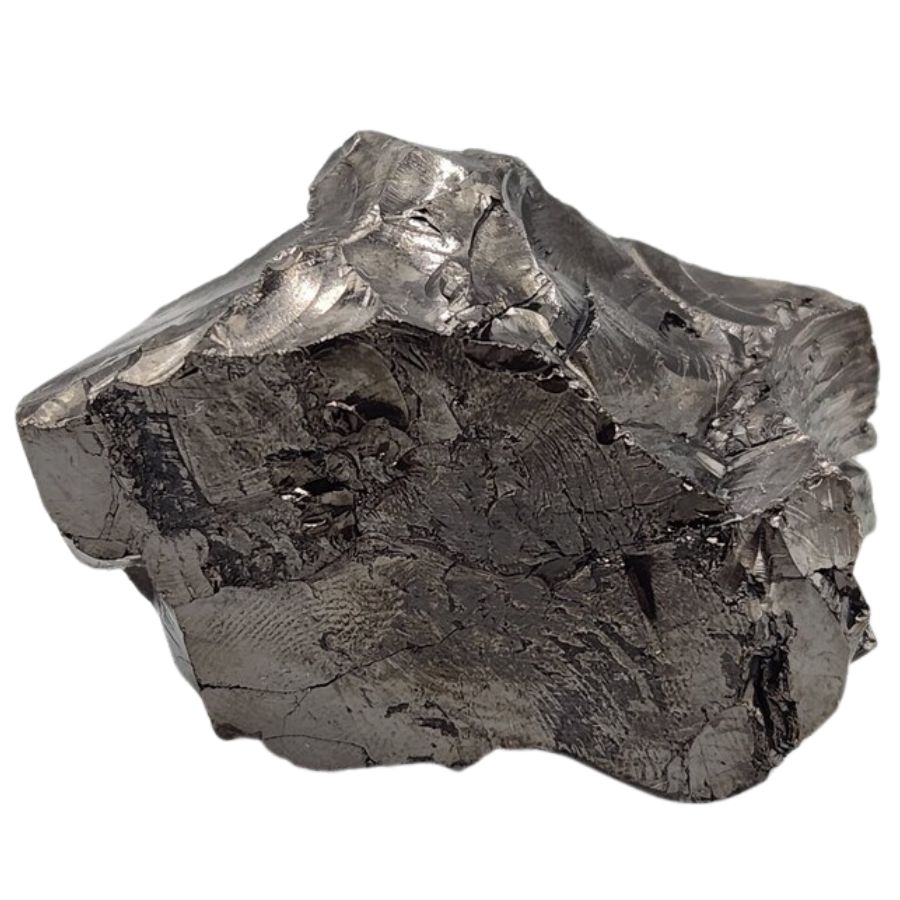
Shungite is a unique black rock that’s been around for billions of years, and it’s mostly found in Russia. What makes shungite special is that it contains fullerenes, a form of carbon that’s shaped like a hollow sphere or tube.
Scientists think shungite formed from organic matter, like plants in ancient lakes and oceans, that slowly changed over time. This rock is pretty rare, which adds to its interest.
One cool use of shungite is in purifying water. The fullerenes in shungite can help remove contaminants and bacteria, making the water cleaner.
People also use shungite in making jewelry and crafts because of its deep black color and smooth texture.
Stibnite
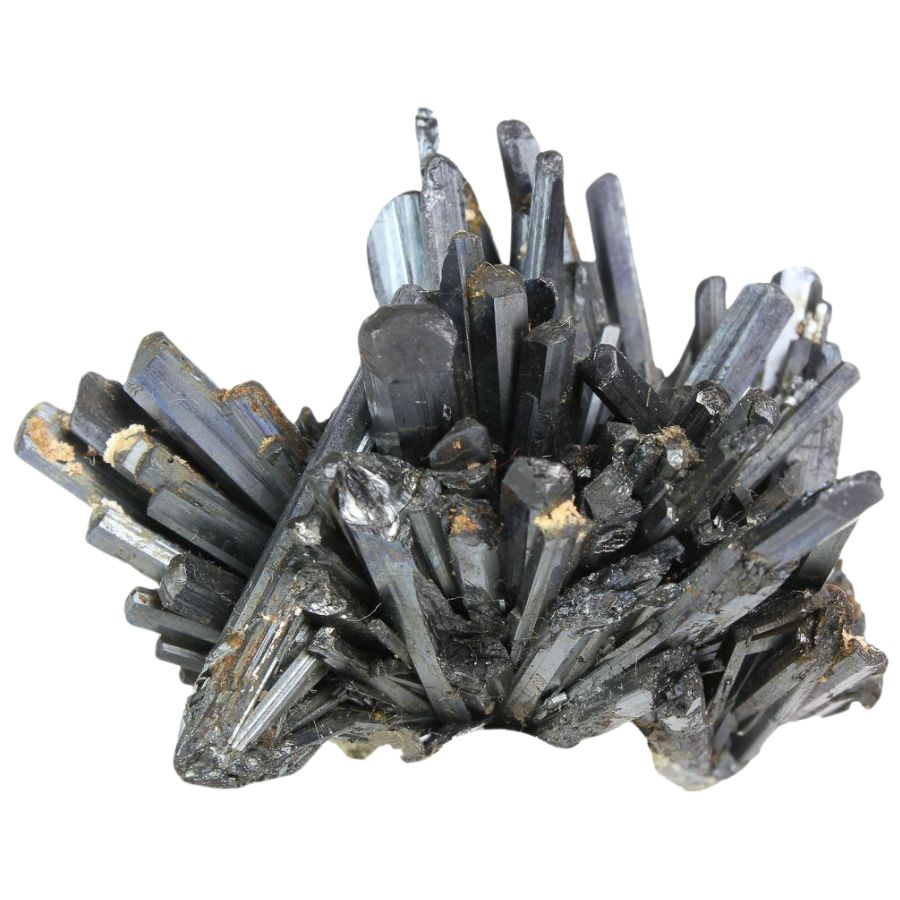
Stibnite is a really cool mineral known for its shiny, silver-gray color and crystal spikes. It’s made of antimony and sulfur, which come together to form these long, needle-like crystals.
This mineral usually forms in areas with volcanic activity, where hot gases and fluids move through rocks. These conditions are perfect for stibnite to grow its signature spiky shape.
One major use of stibnite is in making antimony, a metal used in things like batteries, fire retardants, and even some types of glass. Because of its metallic look, stibnite is sometimes used in jewelry, though it’s pretty delicate.
Collectors find stibnite fascinating, and it’s often displayed in museums and collections. Scientists study stibnite to understand more about how minerals form in volcanic areas and to learn about the properties of antimony.
Dark Silver Crystals
These crystals stand out for their striking metallic sheen and deep, rich colors. These are our top choices of crystals with a deep silver color.
Tetrahedrite
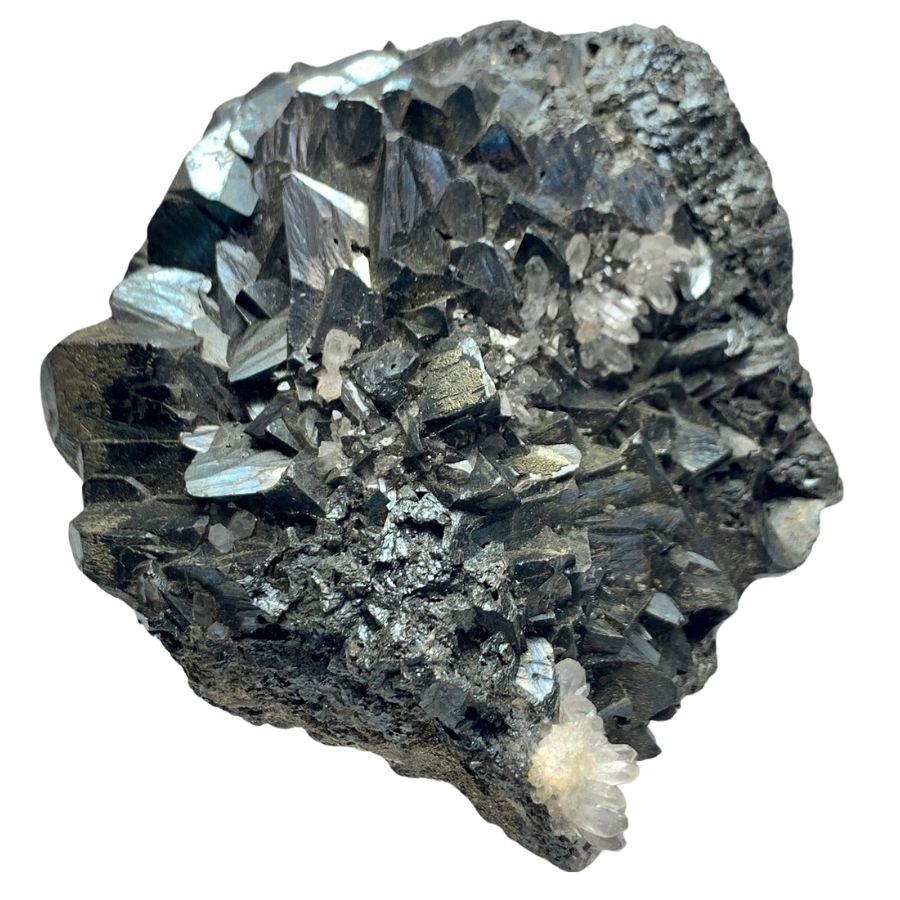
Tetrahedrite is a really cool mineral that’s known for its dark gray to black color and metallic luster. It’s a complex mix of copper, antimony, sulfur, and sometimes silver, all combined together.
It typically forms in areas with a lot of volcanic activity, where hot fluids move through rocks and deposit minerals.
Over time, these fluids cool down and tetrahedrite starts to crystallize, often alongside other minerals like pyrite and chalcopyrite.
One interesting thing about tetrahedrite is that it can be a source of copper and silver. These metals are extracted from the mineral for use in various industries, like electronics and jewelry making.
In addition, tetrahedrite is especially valuable when it contains a high amount of silver.
Chalcocite
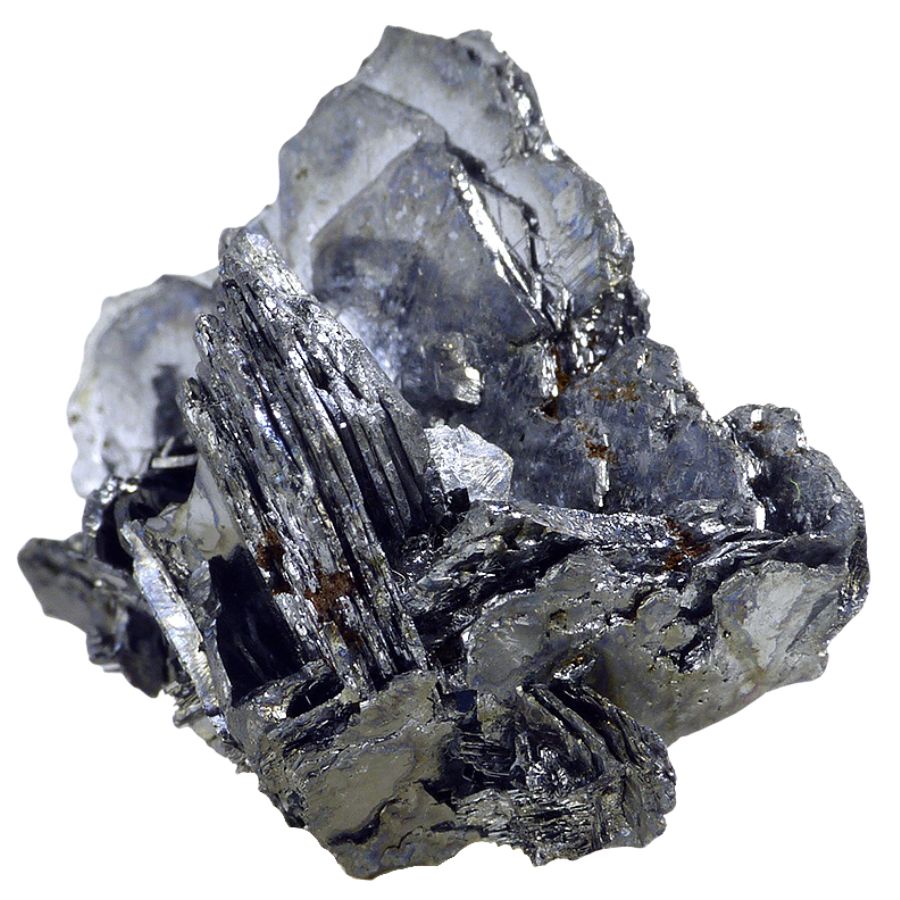
Chalcocite is a really neat mineral that forms dark silver crystals and has a shiny, metallic look. It’s made up of copper and sulfur, which combine to create its unique appearance.
This mineral often forms in places where copper-rich solutions come into contact with rocks, especially in areas with a lot of volcanic activity. Over time, as these solutions cool, chalcocite crystals start to grow.
One of the main reasons people are interested in chalcocite is because it’s a major source of copper. Copper is super important in our daily lives, used in things like electrical wiring, plumbing, and even in making coins.
Chalcocite is especially valuable in the mining industry because it contains a high percentage of copper, making it easier to extract the metal.
Cobaltite
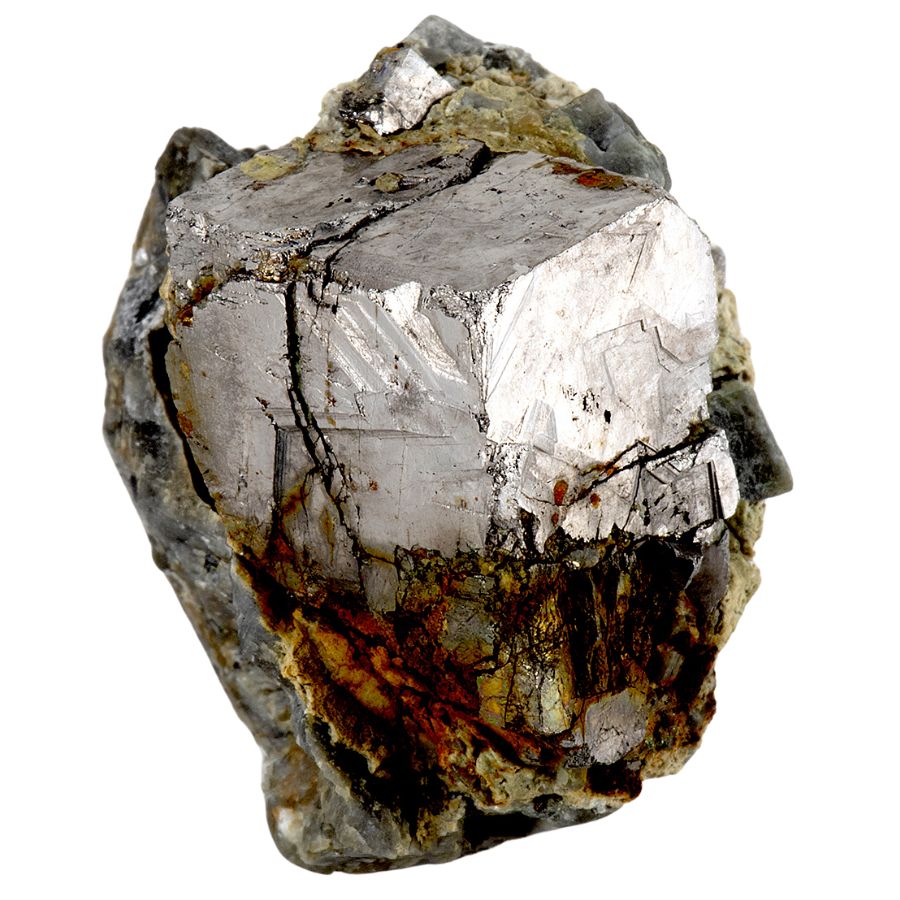
Cobaltite is a cool mineral that stands out with its shiny, silver-gray appearance and metallic luster. It’s made of cobalt, arsenic, and sulfur, forming a unique combination.
This mineral typically forms deep underground in high-temperature environments, like near volcanic activity or in places where hot fluids circulate through rocks. Sometimes, it’s found alongside other minerals like pyrite and chalcopyrite.
One of the main uses of cobaltite is in the production of cobalt, a metal used in many modern technologies. Cobalt is important for making batteries, especially in electric cars, and is also used in certain types of high-strength steel.
Pyrargyrite
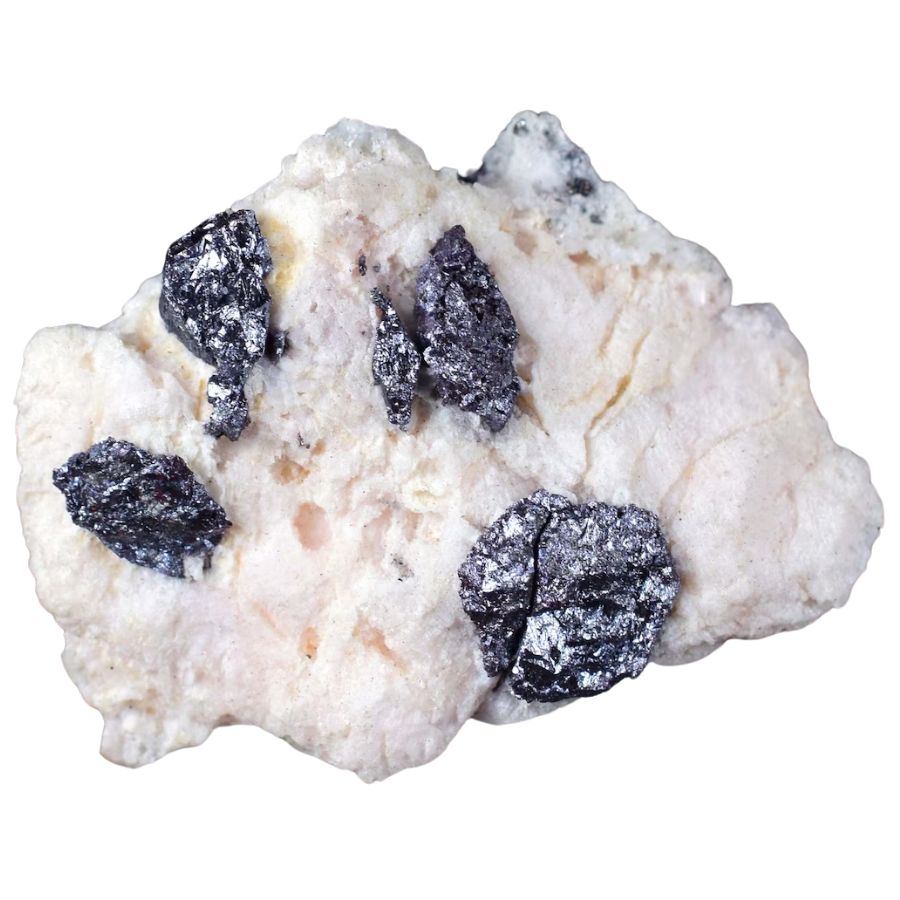
Pyrargyrite is an interesting mineral that’s known for its dark red to black color and shiny crystals. It’s made of silver, antimony, and sulfur, which all come together to form this unique mineral.
Pyrargyrite usually forms deep underground in areas with a lot of volcanic activity, where hot fluids circulate through rocks and cool down, allowing the mineral’s distinctive crystals to grow.
Pyrargyrite is especially sought after in mining because it’s a rich source of silver, which makes it important for industrial uses. For mineral collectors, pyrargyrite’s unique color and crystal shape make it a fascinating find.
Additionally, scientists study pyrargyrite to understand more about how minerals with silver form and change over time in volcanic environments.
Alabandite
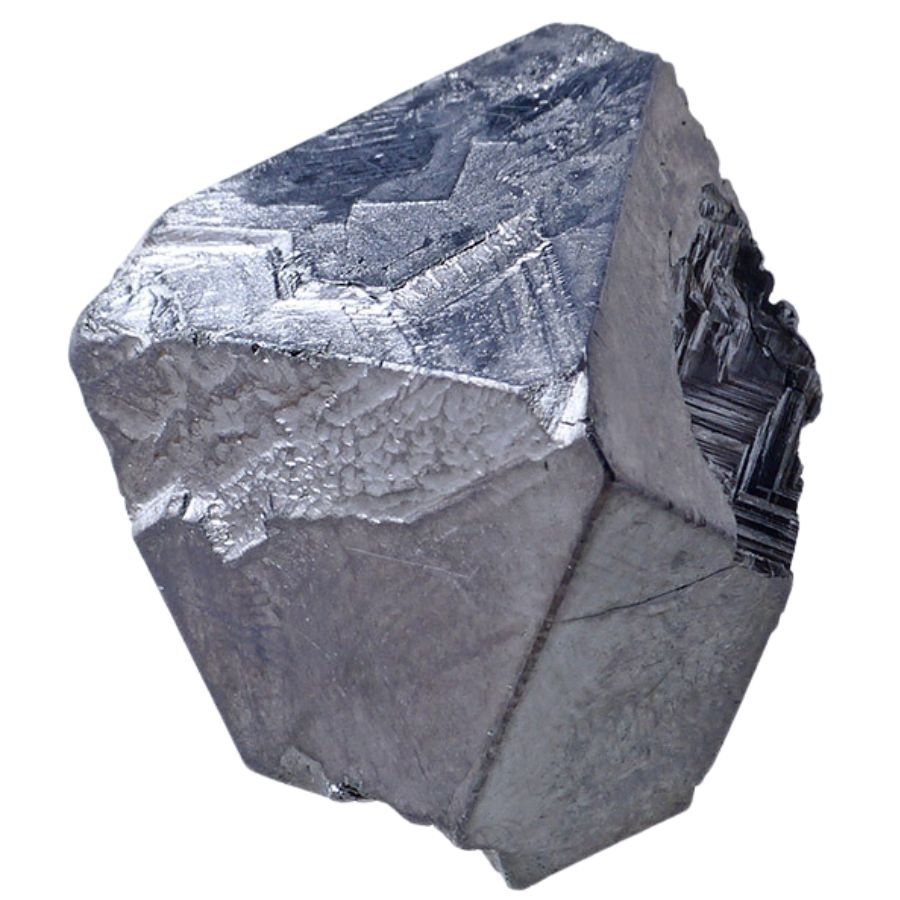
Alabandite is a unique and interesting mineral that’s not as well-known as some others, but it’s still pretty cool. It’s made of manganese sulfide, which gives it a dark, almost black color with a metallic luster.
Also, it usually forms in places where hot, mineral-rich fluids move through the Earth’s crust, especially in areas with a lot of volcanic activity. Sometimes, alabandite can also be found in meteorites.
Alabandite is mainly important for scientists and mineral collectors. Scientists study alabandite to learn more about how minerals form under extreme conditions, like in volcanoes or even outer space.
The rarity and unique formation process of alabandite make it a prized find for mineral collectors. Plus, its unusual appearance and origin story, especially in meteorites, add to its appeal.
Molybdenite
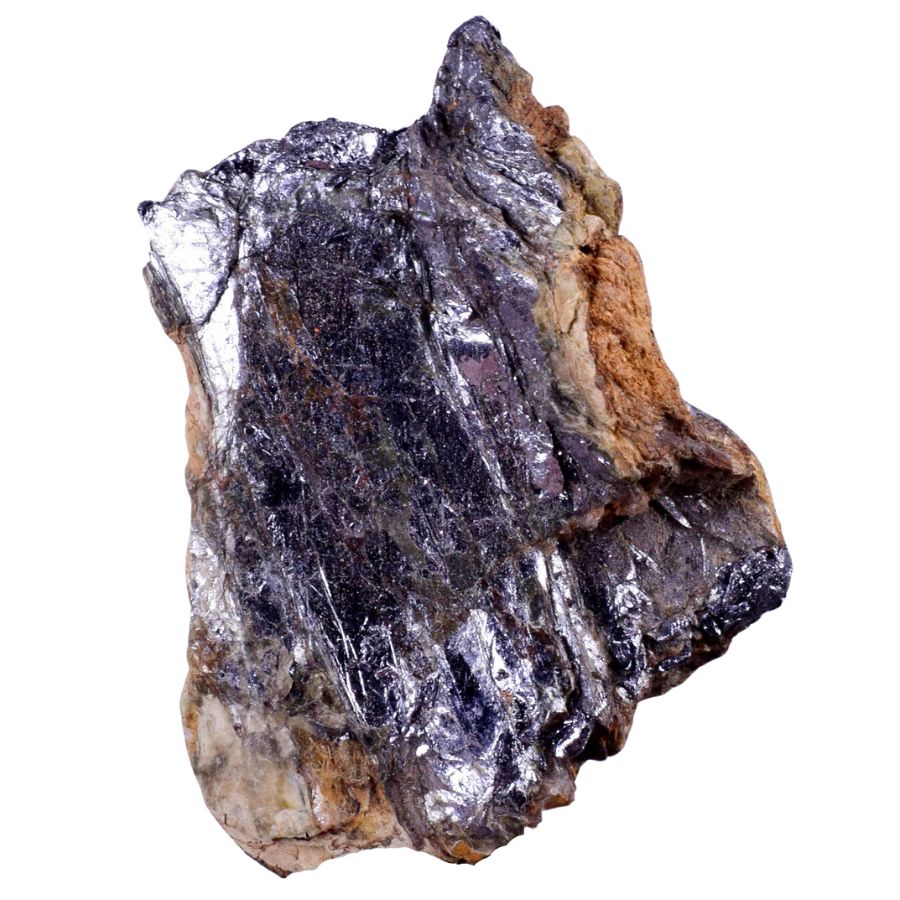
Molybdenite is a mineral that’s got everyone’s attention for its unique look and importance. It’s mostly made of molybdenum and sulfur.
This mineral typically forms in areas where there’s lots of heat and pressure deep underground, like near granite or other types of igneous rocks. As these rocks cool down, molybdenite starts to crystallize, often appearing in sheet-like layers.
One of the coolest things about molybdenite is that it’s the main source of molybdenum, a metal used to strengthen steel and make it more resistant to heat. This makes it super important for construction and manufacturing.
Molybdenum is also used in some chemicals and to make parts of rockets and planes.
Light Silver Crystals
These crystals have a way of catching the eye and sparking curiosity. Discussing our favorite light silver crystals brings to light their beauty and the fascinating science behind their formation.
Acanthite
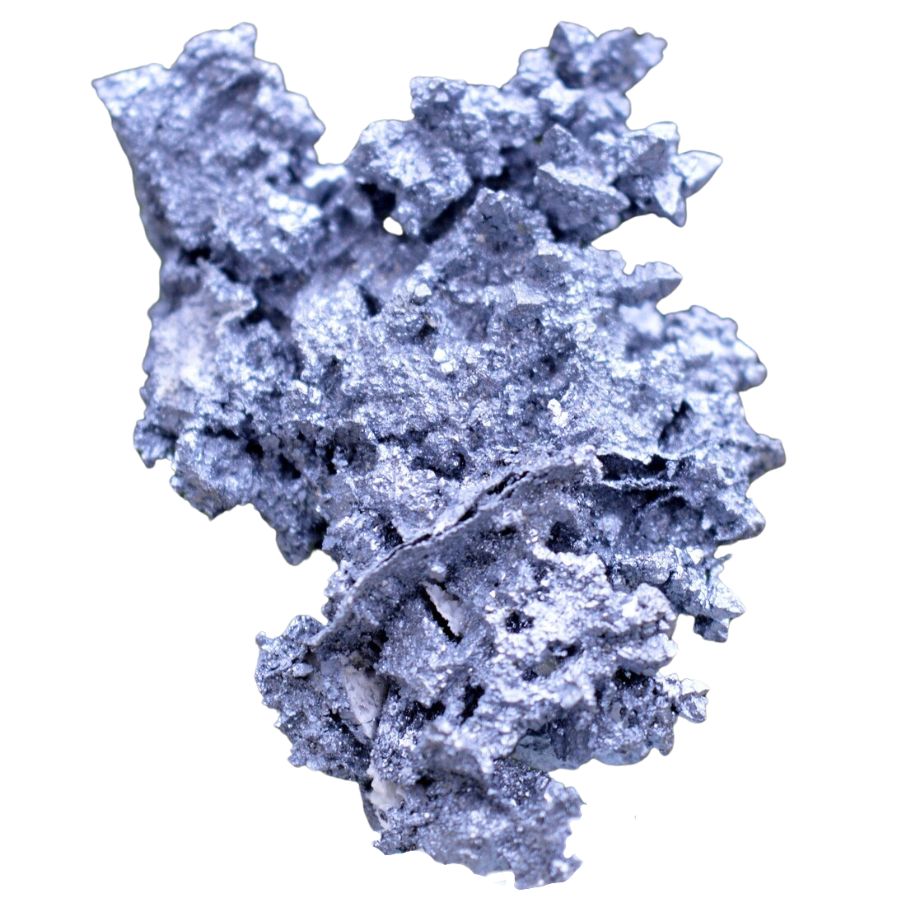
Acanthite is a fascinating mineral known for its shiny, metallic sheen and deep gray color. It’s mainly made of silver sulfide, which is a combination of silver and sulfur.
This mineral typically forms in areas with a lot of volcanic activity, where hot fluids containing silver and sulfur move through cracks in the rock. Over time, as these fluids cool down, acanthite crystals start to grow, creating stunning shapes.
One of the coolest things about acanthite is that it’s a major source of silver, which is used in making jewelry, coins, and electronic devices. Because of its high silver content, acanthite is really important in the mining industry.
Carrollite
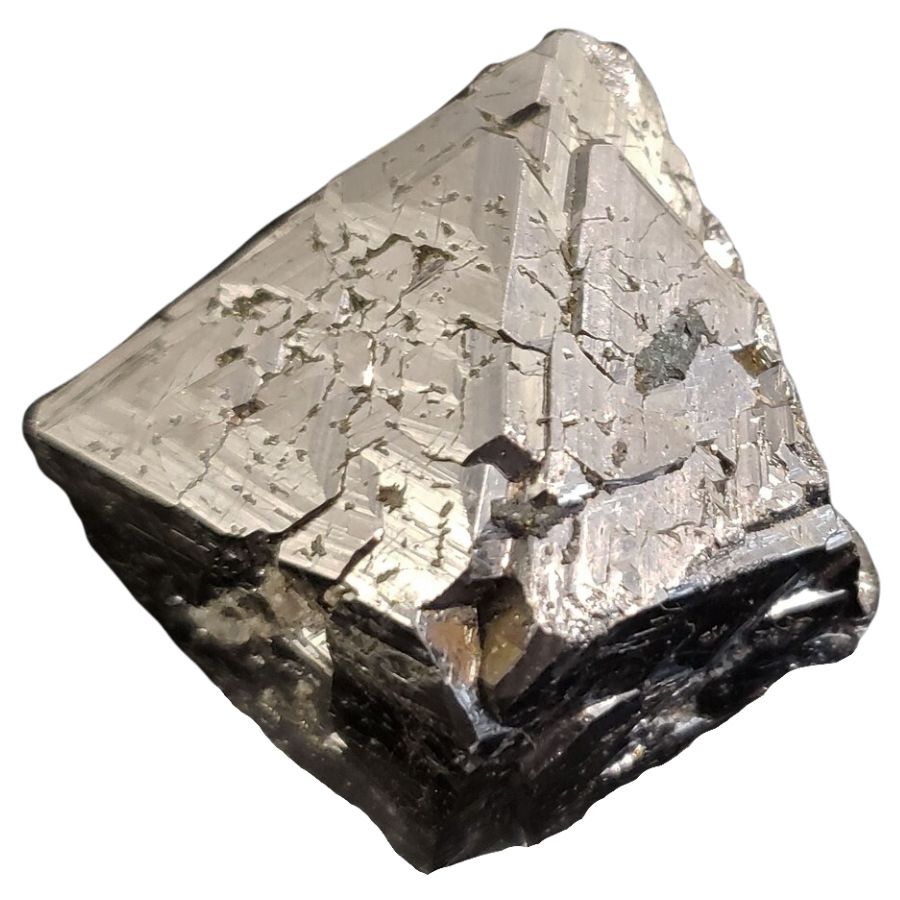
Carrollite is a cool mineral that catches the eye with its shiny, metallic gray color and cube-like crystals. It’s made up of copper, cobalt, and sulfur, which combine under the Earth’s surface.
Carrollite usually forms in copper-cobalt sulfide deposits, often alongside other minerals like chalcopyrite. These deposits are typically found in areas with ancient volcanic activity.
One of the main uses for carrollite is in mining for cobalt and copper, two metals that are super important in our modern world.
Cobalt is used in rechargeable batteries, which power everything from phones to electric cars. Copper is everywhere in electrical wiring and plumbing because it’s an excellent conductor of electricity and doesn’t corrode easily.
Sperrylite
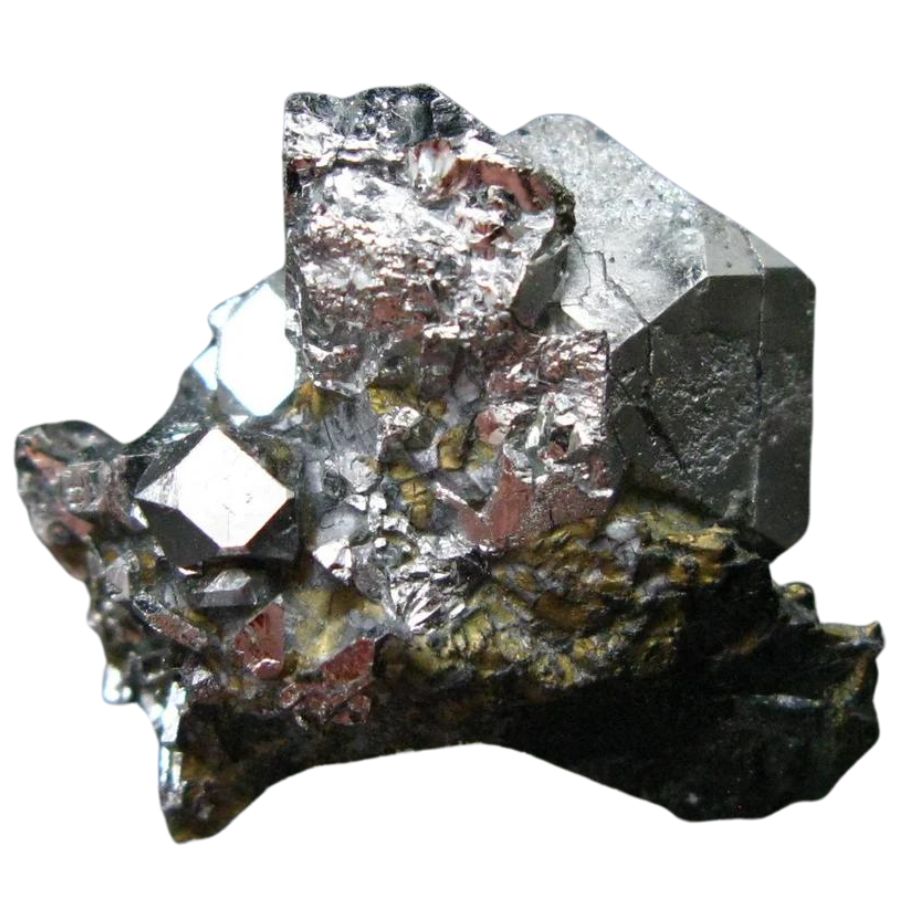
Sperrylite is a rare and pretty mineral that sparkles with a metallic luster, known for being the main source of platinum. It forms in nickel and copper ore deposits where hot, mineral-rich fluids interact with rocks deep underground.
This environment allows platinum to combine with arsenic, creating the shiny, silver-white crystals of sperrylite.
It’s usually found in igneous rocks, those formed from cooled magma, and is often accompanied by other minerals like chalcopyrite and pyrrhotite.
Platinum extracted from sperrylite is super valuable and has lots of uses. It’s used in jewelry because of its beauty and resistance to tarnishing. But it’s also important in car exhaust systems, where it helps reduce harmful emissions.
Plus, it’s used in various medical and electronic equipment because it doesn’t react easily with other substances and can withstand high temperatures.
Pyrolusite
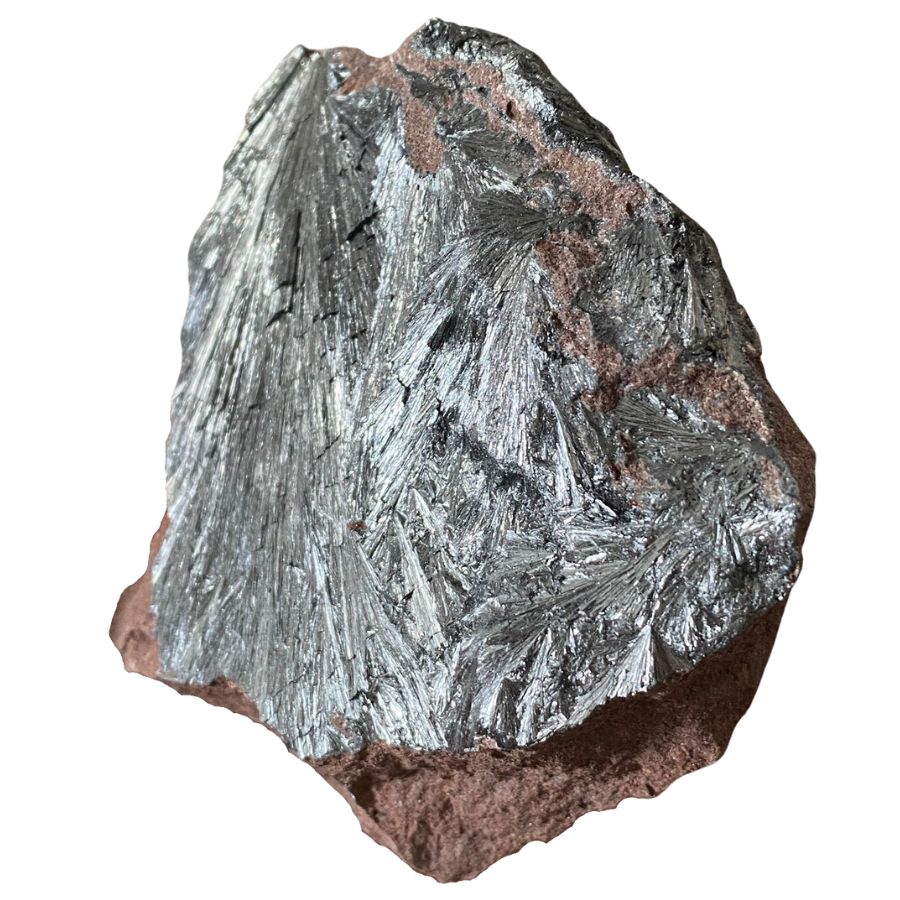
Pyrolusite is a fascinating mineral that’s mostly made of manganese dioxide. It can appear as a light silver crystal and often forms as spiky or fibrous crystals.
It typically forms in places where manganese is present and oxygen in the water reacts with it, often in clear, shallow lakes and seas. Over time, these reactions create pyrolusite, which settles on the bottom.
One of the main uses of pyrolusite is in purifying water because it’s really good at removing iron and other impurities. It’s also used in making batteries and steel, as manganese is an important component in these products.
Another interesting use of pyrolusite is in glassmaking, where it helps remove the green color that iron causes in glass.
Magnetite
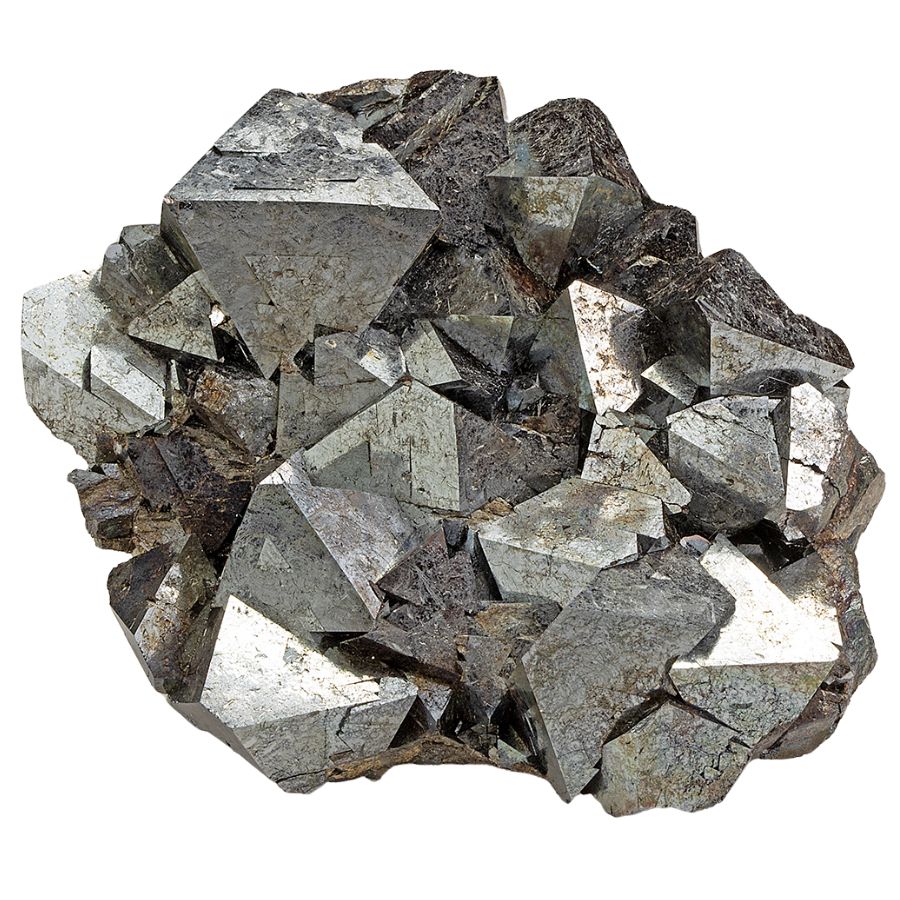
Magnetite is a fascinating mineral known for its strong magnetic properties and striking crystals. It’s mostly made up of iron and oxygen, which gives it a very dense and heavy feel.
This mineral typically forms in volcanic areas, where hot magma cools down and hardens into rock. Sometimes, it even forms in sedimentary environments, where tiny particles settle out of water and get squished together over time.
A big use for magnetite is in making steel, which is a material we see in everything from cars to buildings. It’s also used in some types of electronics because of its magnetic nature.
In the past, people used magnetite to make compasses, as it always points north when floating freely.
Chromite
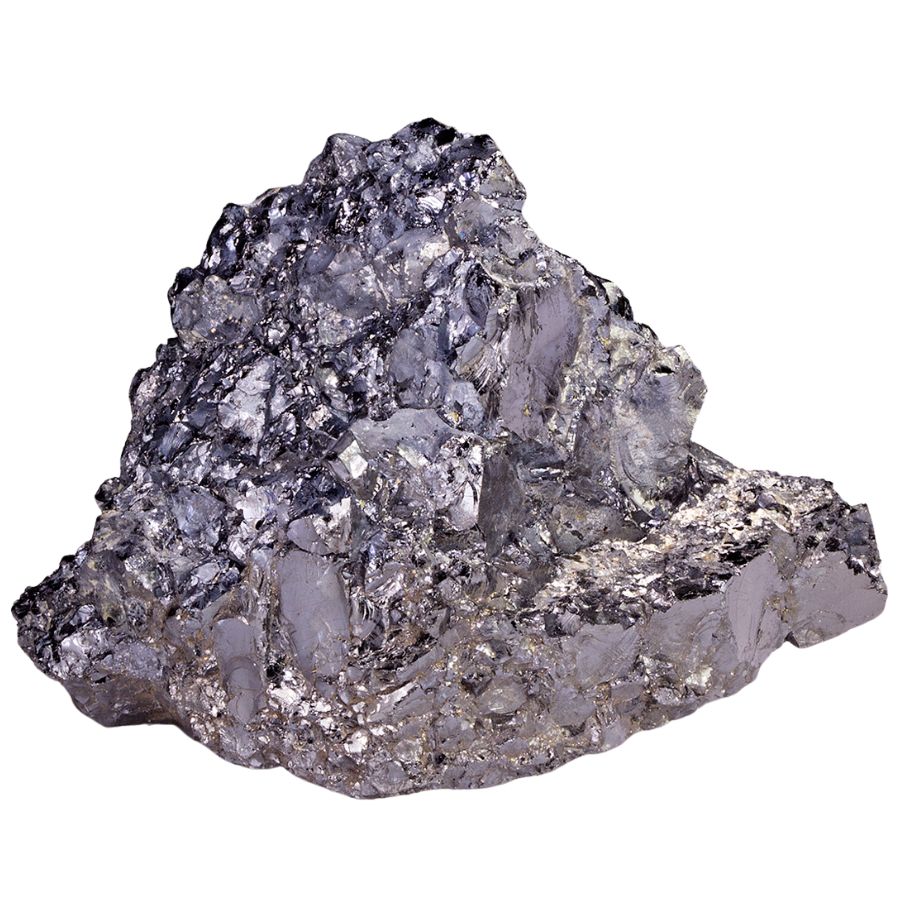
Chromite is a dark and shiny mineral that’s really important because it’s the main source of chromium. It forms deep in the Earth’s crust where magma from the mantle cools down and solidifies.
When this happens, chromium mixes with oxygen and other elements to create chromite. It’s often found in layered complexes, which are large, layered deposits of different minerals.
The chromium extracted from chromite is super useful. It’s used to make stainless steel, which is strong and doesn’t rust, making it perfect for lots of things like kitchen appliances and medical equipment.
Chromium is also used in chrome plating, giving a shiny, protective coat to metal objects, and in pigments for vibrant colors in paints and dyes.

